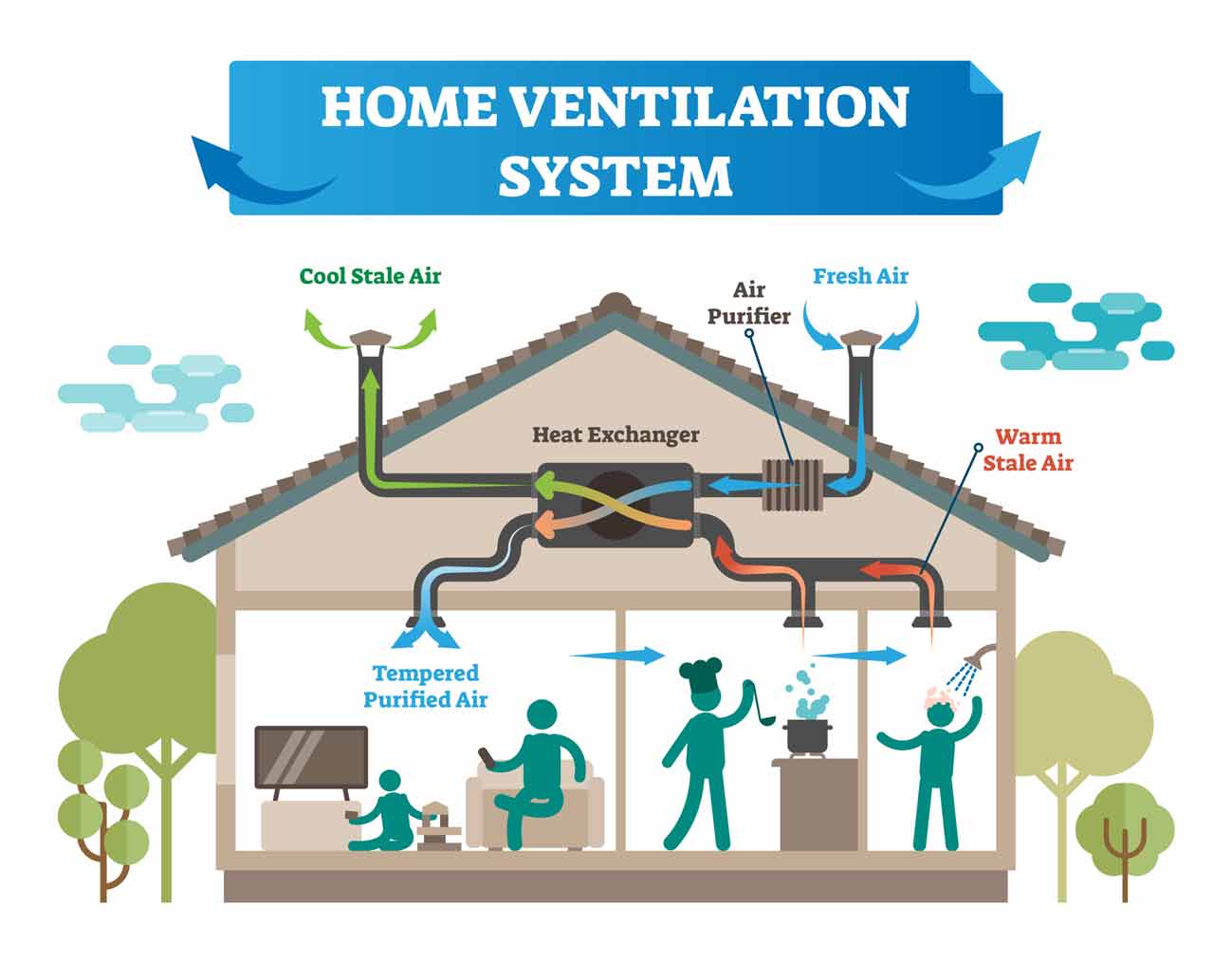How HRV Reduces Energy Bills Year After Year
Wiki Article
The All-Inclusive Overview to the Uses of Heat Recovery Ventilation in Modern Buildings
Heat Recovery Ventilation (HRV) systems represent a substantial improvement in building modern technology (HRV Heat Recovery Ventilation). They supply a method for trading stale interior air with fresh outdoor air while reducing power loss. This strategy not only boosts indoor air top quality however also adds to power effectiveness in both residential and business buildings. Recognizing the various applications and advantages of HRV can reveal its important function in contemporary design and sustainability initiatives. The implications of this technology deserve exploring additionallyRecognizing Heat Recovery Ventilation Solutions

Numerous contemporary structures focus on energy effectiveness, understanding warm recovery ventilation (HRV) systems is essential for maximizing interior air quality and minimizing power intake. HRV systems function by moving warmth from stagnant interior air to inbound fresh air, effectively maintaining comfortable indoor temperatures while reducing energy loss. These systems include a warm exchanger, fans, and ductwork that assist in the blood circulation of air. Throughout winter, HRV units catch and reuse heat from the outbound air, while in summertime, they can assist cool incoming air. By constantly exchanging air, HRV systems also decrease humidity and the concentration of indoor pollutants. Proper installation and maintenance of HRV systems are important for their effectiveness and efficiency in enhancing total building efficiency and comfort.
Benefits of Heat Recovery Ventilation
Heat recovery ventilation systems supply countless advantages that improve both power effectiveness and interior air high quality in contemporary buildings. By catching and reusing power from exhaust air, these systems substantially lower heating & cooling costs, bring about reduced energy consumption. They preserve a steady circulation of fresh outdoor air, decreasing the danger of interior air contaminants and irritants. This constant exchange aids regulate moisture levels, avoiding mold and mildew growth and ensuring a much healthier living environment. In addition, HRV systems add to sustainability objectives by lowering total carbon footprints. Their capacity to enhance air flow without compromising thermal convenience makes them a useful addition to contemporary structure layout, promoting both financial and environmental advantages.Applications of HRV in Residential Buildings
As home owners progressively focus on energy effectiveness and interior air high quality, the applications of heat recuperation ventilation (HRV) systems in property structures have actually become a lot more widespread. HRV systems are particularly useful in snugly sealed homes, where preserving fresh air circulation is necessary for avoiding wetness accumulation and interior toxins. They efficiently move warmth from outbound stale air to inbound fresh air, lowering power expenses connected with home heating and air conditioning. In addition, HRVs can boost convenience levels by controling moisture and temperature level. They are additionally versatile for different residential styles, consisting of single-family homes and multi-unit buildings. Overall, integrating HRV systems supports lasting living methods while making certain a much healthier indoor atmosphere for owners.HRV in Industrial and Industrial Settings
In business and commercial setups, the execution of heat recuperation ventilation (HRV) systems has actually come to be progressively vital for enhancing energy effectiveness and maintaining air high quality. These systems effectively transfer warmth from exhaust internet air to inbound fresh air, minimizing the requirement for added heating or air conditioning. This not just reduces energy prices however additionally adds to sustainability initiatives. Industries such as manufacturing, warehousing, and office structures benefit significantly from HRV systems, as they assist manage temperature level and moisture degrees, ensuring a comfortable and productive environment. Additionally, HRV systems help in removing impurities and excess dampness, improving indoor air quality. As guidelines around air top quality come to be more stringent, the fostering of HRV innovation is likely to grow, making it an important part of modern business and industrial facilities.Future Patterns in Heat Recovery Ventilation Modern Technology

Regularly Asked Concerns
Exactly How Does Heat Recovery Ventilation Effect Indoor Air Quality?
Heat recovery ventilation significantly enhances interior air top quality by continually exchanging stagnant indoor air with fresh outside air while recovering energy. This procedure minimizes pollutants, maintains optimal moisture levels, and guarantees a much healthier atmosphere for owners.Can HRV Equipments Be Installed in Existing Structures?
HRV systems can without a doubt be set up in existing buildings. Retrofitting might need modifications to ductwork and ventilation designs, yet it significantly enhances energy efficiency and indoor air high quality, making it a sensible alternative for older frameworks.What Maintenance Is Needed for HRV Systems?

Are There Details Climates Where HRV Is More Effective?
Heat recovery ventilation systems are specifically reliable in climates with substantial temperature differences between seasons. These systems enhance energy effectiveness browse around here by recuperating warmth from exhaust air, making them excellent for both cool and reasonably cozy atmospheres.Exactly How Do HRV Equipments Affect Energy Costs?

Report this wiki page